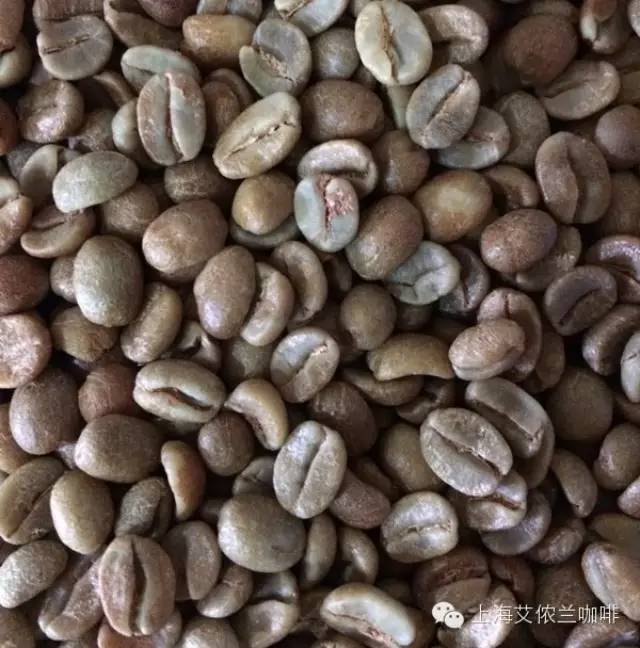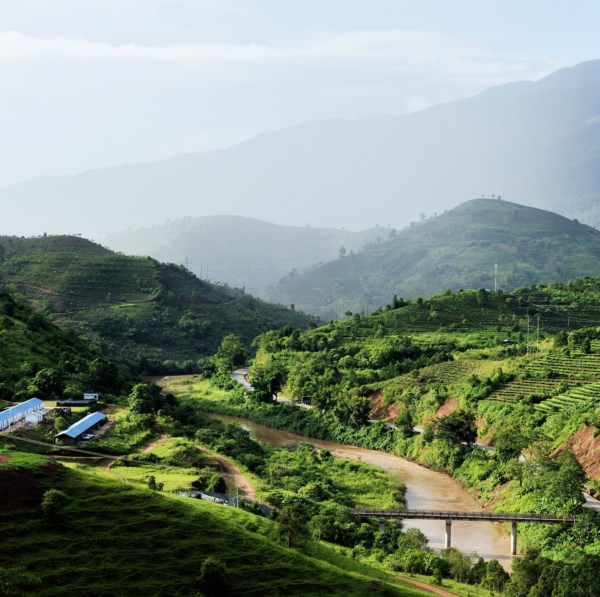Introduction to Chinese Coffee Plantation: exploring the Secret Coffee Plantation in Yunnan to decipher the Magic Fruit
Miraculous fruit
Exploring the Coffee Plantation in Yunnan
(edited by Yan Xia: milkshake
In southern China, Yunnan, and Taiwan, there is such a plantation, in which there are many beautiful, gorgeous red fruits, like cherries, which seem to have some magic. I can't help but pick some seemingly ripe fruits and taste them. The seemingly attractive red fruit tastes so sweet and fragrant. All of a sudden, I feel relaxed and relaxed, and my spirit is very excited. This is the fruit, isn't it amazing! It turns out that these are the coffee beans that are popular all over the world, but there are such magical coffee beans in Yunnan, so come with me to explore this mysterious plantation! (1)
Visiting garden
Plantation: 79 Cafe
Planting area: 500 mu
Soil: latosol (PH value between 4.5 and 6)
Average altitude: 1150 m
Annual rainfall: 1700-2200mm
Average temperature: 18.6 mi 20.2 degrees
Air humidity: 80% Murray 83%
Peasant households: 53 households (212 people involved in management)
In 1892, French missionaries brought coffee to Binchuan County, Yunnan Province for cultivation, and in the 1920s, it expanded to the inner village of Mirror in Dehong Prefecture. In the mid-1950s, Yunnan began to grow coffee on a large scale. In the 1980s, the United Nations cooperated to support the cultivation of coffee in Yunnan, and provided financial and technical assistance in variety, cultivation and initial processing, which further improved the quality of coffee raw materials in Yunnan. After visiting the Yunnan coffee base, the international coffee organization tasting experts identified Yunnan coffee as a small seed coffee processed by wet processing in Colombia, and became a high-quality coffee planting base in the world. (2)
The western and southern parts of Yunnan Province are located between 15 °N and the Tropic of Cancer. Most areas are 1000 m-2000 m above sea level. The topography is dominated by mountains and slopes, with large ups and downs, fertile soil, sufficient sunshine, rich rainfall and large temperature difference between day and night. These unique natural conditions form the particularity of Yunnan small grain coffee taste-strong but not bitter, fragrant but not strong, slightly fruity. Therefore, the effective nutrients of Yunnan small-grain coffee are higher than those of other foreign coffee varieties. In the south and southwest of Yunnan, Simao, Xishuangbanna, Wenshan, Baoshan, Dehong, Lincang and other areas are the distribution areas of small-grain coffee in Yunnan. (map of Yunnan)
In the 79 Coffee planting Garden, a 3500-mu coffee planting base in Jiangcheng County, Simao Prefecture, Yunnan Province, bright red coffee fruits hang all over the branches. look at these coffee trees. it has one or more trunks and grows major branches from the trunk. and then grow more twigs. Although there are many branches, but the trunk is not high, the coffee trees in the plantation are generally kept at 2mur3 meters high, and most people can pick them with their heads up and their hands out. Do not mistakenly think that all coffee trees are so small, naturally growing coffee trees can grow to 8 Mel 10 meters high, and the height of plantation coffee trees is only easy to pick. (coffee tree)
Coffee bean flowers are also very beautiful, dark green leaves on the branches, with a strong aroma of white flowers, after a few months, bear cherry-like red fruit. Yunnan coffee belongs to Arabica tree species, so it is self-pollinated without insects (insects are only interested in the flowers of Robster trees). Whether the coffee tree blossoms or not depends on whether Rain Water is abundant or not, and it will take 7-9 months to fully mature. If it rains a few times throughout the year, it can blossom several times. Interestingly, in a tree, there will be blooming flowers, immature coffee fruit, fully ripe coffee fruit, and overripe coffee fruit. (coffee flowers 1, 2)
The process of turning coffee from flower to fruit is also interesting. At first, the fruit has a thick, shiny green skin, and then turns crimson (what we see now is the process of crimson), rarely turns yellow and turns brown (coffee beans) when ripe. (coffee transition process)
It was the end of November when I came to the Yunnan coffee plantation. In Yunnan, which is like spring all year round, there seems to be no cold, only the season of fruit harvest, the joy of harvest! A group of people are fiercely hand-picked (pickers go to the same botanical garden several times in a few weeks, resulting in high-quality products. This method of picking ensures the consistency of the size and ripening of the coffee fruit. Also ensure that there is enough flesh in the fruit) a lot of red fruit, a lot of harvest. However, it is really difficult for us laymen to take the coffee beans out of the fruit. Fortunately, someone explained its process to us. (characters)
A farmer who is picking coffee beans said that the coffee harvest is very good this year, with about one and a half tons of fresh coffee fruit per mu. The annual output of fresh coffee fruit per mu is 1500 kg, with an average of 1000 kg. After peeling, fermentation, shelling and other initial processing, the annual output of raw coffee beans is 80-160kg, with an average of 120kg. The output in 2007 is obviously better than that in previous years.
Little tips: another way is to "pick the light" ("picking the light" is to pass the branch between the fingers and pick off all the coffee fruit on it, for better or worse. Then, some unwanted ingredients such as leaves, wood and stones should be picked out from the pulp, which is dried in the sun for a few days. when the skin and flesh are completely dry, the coffee fruit is peeled in the machine, and the pulp and sheepskin paper hard skin comes out. the raw beans are covered with a layer of silver, and the next step is to grade them by type (normal beans and round beans) and size. This is the dry process to get dry coffee, also known as natural coffee.)
There are two ancient ways to get coffee beans out of the fruit, dry and wet. Yunnan small seed coffee is washed (only for hand-picked cases), because the washed Arabica coffee tastes significantly fresher, more fragrant, floral, wine, and sometimes grassy. If you dry the same kind of coffee, it will only remind people of mineral oil and carbon. Good quality coffee needs value for money! At present, the washing method is mostly used in Simao area, while some dry cleaning methods are also used in some areas of Baoshan, Yunnan Province. In Taiwan, due to the influence of water resources and taste, raw coffee beans are mainly dry-cleaned. (washing method)
Little tips: (washed coffee; the peeled coffee fruit is fermented in a pool to remove the pulp. After 2-3 days of fermentation, the residual pulp is removed from the bean. This process can not only reduce the residual pulp, but also produce some chemical reactions to improve the taste and aroma. After this stage, the coffee beans are still wrapped in sheepskin. At this point, we have to go through another selection process. The undercooked parts are fished off on the water and the coffee beans are dried. If dried in the sun, the unique properties of washed coffee will be enhanced. The wet method is more expensive than the dry method, because it takes many steps and consumes a lot of water, but you can get high-quality coffee.)
The soaked and dried coffee beans need to be roasted. An old farmer told me: "the job of the plantation is to pick the coffee beans and go through a series of processes until they are dried and packed into storage. The rest of the work is left to the roaster to roast the coffee beans." I see. I still want to take a look at the baking process, but it is a great pleasure to feel the picking for myself. In the evening, we dance stick dance with fellow villagers in Yunnan, that is, there are three people standing at each end, holding six sticks together, and other girls and boys are bouncing around in it according to the rhythm of the music, as long as they don't get caught by the stick.
Source:
Xuan Yu's Coffee World blog
Important Notice :
前街咖啡 FrontStreet Coffee has moved to new addredd:
FrontStreet Coffee Address: 315,Donghua East Road,GuangZhou
Tel:020 38364473
- Prev

World Coffee Manor: a detailed introduction to the treatment of Coffee beans with Red Wine at Carmen Manor in Panama
New product in September: Panamanian Carmen Chateau red wine treats coffee beans. I love coffee not because of how delicious it is, but because the smell is so fascinating. I always thought that the greatest charm of coffee was the aroma of coffee. It was not until I came to work here that it subverted my perception of coffee.
- Next

World Coffee Manor: Manzhongtian Coffee Manor has been certified by the Rainforest Alliance.
(photo caption: Manzhongtian Manor appearance) recently, the Manzhong Tian Coffee Manor of Aiji Group has successfully passed the on-site audit certified by the Rainforest Alliance, becoming one of the Rainforest Alliance certified coffee farms in China. This is another country that Aidan Coffee has obtained after passing EU Organic Certification, Chinese Organic Certification, Starbucks CP Certification and Pu'er Origin Certification, the first Chinese coffee capital.
Related
- Does Rose Summer choose Blue, Green or Red? Detailed explanation of Rose Summer Coffee plots and Classification in Panamanian Jade Manor
- What is the difference between the origin, producing area, processing plant, cooperative and manor of coffee beans?
- How fine does the espresso powder fit? how to grind the espresso?
- Sca coffee roasting degree color card coffee roasting degree 8 roasting color values what do you mean?
- The practice of lattes: how to make lattes at home
- Introduction to Indonesian Fine Coffee beans-- Java Coffee producing area of Indonesian Arabica Coffee
- How much will the flavor of light and medium roasted rose summer be expressed? What baking level is rose summer suitable for?
- Introduction to the characteristics of washing, sun-drying or wet-planing coffee commonly used in Mantenin, Indonesia
- Price characteristics of Arabica Coffee Bean Starbucks introduction to Manning Coffee Bean Taste producing area Variety Manor
- What is the authentic Yega flavor? What are the flavor characteristics of the really excellent Yejasuffi coffee beans?

